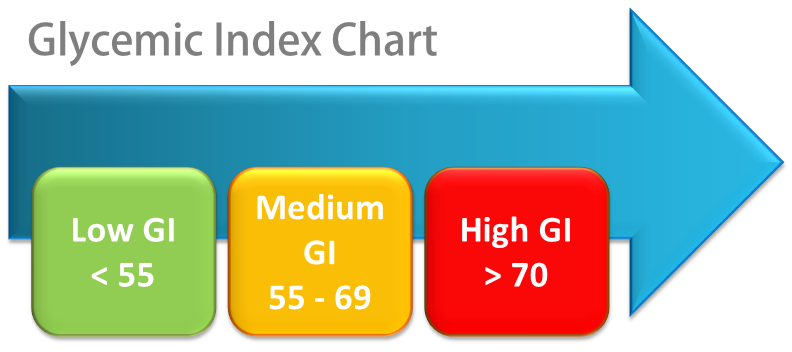For years I have written on weight loss, blood sugar, heart disease, cancer and just about every condition under the sun. One thing I haven’t ever covered is the Glycemic Index (GI) and its impact on your health. The glycemic index, or GI, measures how a carbohydrate-containing food raises blood glucose. Foods are ranked based on how they compare to a reference food, which is either glucose or white bread. A food with a high GI raises blood glucose more than a food with a low GI.
It is important to grasp the idea of GI and how it can affect your overall health at this moment and for the future. If a food raises your blood sugar (Higher GI) then you run the risk of gaining weight, diabetes, high cholesterol, elevated blood pressure, increased risk of cancer and that is just the tip of the iceberg.
How Is GI Measured?
Typically, a food is consumed in whatever serving size will provide 50 grams of available carbohydrates. Available carbohydrates are carbohydrates that get readily digested, absorbed, and metabolized by our body. These carbohydrates have a much greater impact on our blood sugar level than carbohydrates in general because carbohydrates in general include substances that aren’t readily digested, absorbed, and metabolized. Insoluble fibers, for example, are carbohydrates that do not have an immediate impact on our blood sugar level because they cannot be readily digested. So, if a food has 20 grams of total carbohydrates but 8 grams are from fiber, the net would be 12 grams of available carbohydrates.
After the 50 grams of available carbohydrates have been consumed, blood sugar levels are measured over a period of 2 hours. This will show the immediate impact of that food on your blood sugar levels. The next step is to compare that food’s response to a “control” which is usually white bread or glucose (Same amounts consumed-50 grams). The control (glucose or white bread) is often given the score of 100 and then is compared to the results of the food being compared. For example; if we tested a food and it had 35% effect vs. the 100% of glucose, it would be given a score of 35 for its GI rating. The more complex the carbohydrate (meaning the more fiber in this case), the less the impact will be on the GI rating.
Examples of carbohydrate-containing foods with a low GI include dried beans and legumes (like kidney beans and lentils), all non-starchy vegetables, some starchy vegetables like sweet potatoes, most fruit, and many whole grain breads and cereals (like barley, whole wheat bread, rye bread, and all-bran cereal). And since meats and fats don’t contain carbohydrates they don’t have a score at all.
Going back to the negative impact that sugar can have on your health and the fact that high GI foods will contribute to your increased blood sugar levels, we need to focus on one of two thins to get things under control; Slow the carbs down or eliminate the carbs completely. I think the elimination part makes the most sense, but for most of us that is not such a friendly proposition. Do you really want to give up your bread? Oprah didn’t. Do you really want to stop having those pasta dinners, pizza, French fries or rice? Heck no.
What can you do? Slow those carbs down. To slow down carbs you need to do one of two things: Eat them with good fats and protein or use a supplement that will inhibit their breakdown into sugar. By adding in a good source of protein and fat, your body digestion will be slowed down which in turn slow down the spike in blood sugar from consuming these evil foods. The problem with this approach is that most people still eat more carbs than they should and the end result is that they consumed even more calories. This approach is best if you can maintain portion control. My experience though leads me to believe that most people don’t understand portion control or don’t want to do it anyway.
Luckily, there is a supplement that originates from White kidney beans (Phase 2) that has great science showing its impact on blocking the ability of amylase (the enzyme that breaks starches down into sugar) to do it’s job with approximately 65% of the starch in your meal or snack. By blocking or inhibiting the effects of amylase, you decrease the amount of sugar that is produced from those carbs and therefore decrease the “glycemic impact” of that food on your blood sugar. You can now see why Phase 2 helps with weight loss, blood sugar and why I often recommend it for people with other health challenges related to elevated blood sugar levels (immune challenges, cholesterol levels, etc.).
Keep in mind that the best approach to lowering blood sugar levels is to avoid those foods that have a high GI. If you are curious what the GI is for certain foods, check out this website to do a comparison. (http://www.health.harvard.edu/healthy-eating/glycemic_index_and_glycemic_load_for_100_foods) You may be shocked. In the meantime (while you learn to eat better), consider adding in more good fats and protein to your meals, cut back on portion sizes and take your Phase 2 with each meal or snack that contains starches (Breads, pasta, potatoes, rice, etc.).

